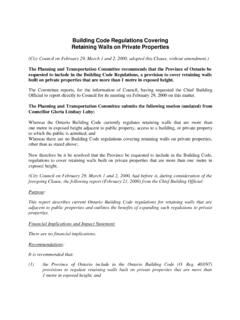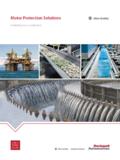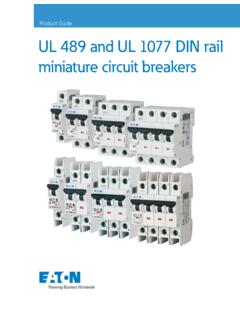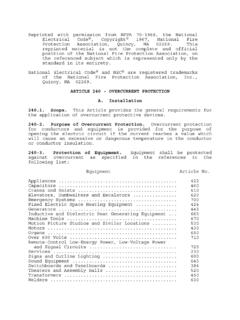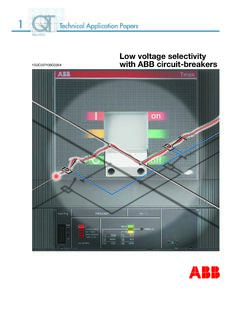Transcription of Tree Protection Policy and Specifications for Construction ...
1 Parks, Forestry & Recreation Urban Forestry Tree Protection Policy and Specifications for Construction Near Trees July 2016 Table of Contents 1. Introduction .. 3 Types of Tree Damage .. 3 2. Protecting Trees .. 6 Prohibited Activities Within a TPZ .. 8 3. Tree and Site Protection Measures .. Protection Signage .. Protection Plan ..106. Tree Protection Plan Notes ..10 General Notes ..10 Protection Plan Details .. for Tree Removal or Injury ..159. Tree Guarantee Deposits ..16 Tree Protection Guarantee ..16 Tree Planting Security ..16 Repairs to Utilities.
2 Species that are Intolerant of Construction Disturbance .. Information ..18 Tree Protection and Plan Review (City -owned and Private Trees) ..18 Ravine and Natural Feature Protection ..18 July 2016 21. IntroductionMaintenance, growth and enhancement of the urban forest are important goals of the City of Toronto. Preserving and protecting healthy trees can help the City to achieve these goals. Considering tree Protection in the initial stages of Construction planning may mean the difference between preserving a healthy tree and having to remove it. Plans created with tree Protection in mind help protect the city's urban forest.
3 The tree Protection Policy and Specifications outlined below reflect the Policy of Toronto City Council. Anyone failing to adhere to the tree Protection Policy and Specifications will be financially responsible for any resulting damage to trees and may be charged under the provisions of the applicable City of Toronto tree by-law or subject to orders to comply. Prior to commencing with any demolition or Construction activity it is important that an arborist1 determines the location, species, size and condition of trees on the property and surrounding properties and becomes familiar with the tree Protection by-laws that could impact the proposal.
4 The following by-laws protect trees in the City of Toronto: Street Tree By-law, City of Toronto Municipal Code Chapter 813, Article II, protects alltrees situated on City streets. Private Tree By-law, Article III, Chapter 813 of the City of Toronto Municipal Codeprotects t rees on private property with diameter of 30cm or more and trees of anydiameter that were planted as a condition of a permit issued under this bylaw or a siteplan agreement. The Ravine & Natural Feature Protection By-law, Chapter 658 of the City of TorontoMunicipal Code prohibits and regulates the injury and destruction of trees, as well asfilling, grading and dumping within designated areas of the City.
5 There is no minimumdiameter for a tree to qualify for Protection under the Ravine and Natural FeatureProtection By-law. Trees of any size located in the designated areas qualify forprotection. The Parks By-law, Municipal Code Chapter 608, Article VII protects all trees located ina City above noted by-laws are implemented by Urban Forestry under the authority of the General Manager, Parks, Forestry and Recreation. City of Toronto's tree Protection by-laws can be found at Types of Tree Damage Physical injury to the trunk, crown and roots of a tree will occur if Construction equipment is permitted close to trees or if structures are built into the growing space of a tree.
6 Inappropriate pruning may also result in tree injury. Physical injuries are permanent and can be fatal. 1 Arborist An expert in the care and maintenance of trees including an arborist qualified by the Ontario Training and Adjustment Board Apprenticeship and Client Services Branch, a certified arborist qualified by the International Society of Arboriculture, a consulting arborist registered with the American Society of Consulting Arborists, a registered professional forester or a person with other similar qualifications as approved by the General Manager, Parks, Forestry and Recreation.
7 July 2016 3 Root cutting i s another type of physical injury that can significantly impact the health of a tree. The majority of tree roots are found in the upper 30 to 60 cm of soil. Excavation for foundations or utility installation may cut roots if the excavation is too close to trees. Trees can become destabilized and may fall over if anchor roots are severed. Compaction of the soil in the tree root zone is one of the leading causes of tree decline in Toronto s urban forest. Soil compaction occurs primarily from vehicles and equipment moving across the root zones.
8 Piling or storing materials or debris on top of the root system can also result in soil compaction. Soil compaction causes the pore spaces in the soil, which contains air and water necessary for root growth, to be reduced. Without space available for oxygen and water, tree roots will suffocate and tree decline will follow. With rutting, a form of intense compaction, roots are severed by the tires of equipment. Root destruction can also be caused by changes to the existing grade. Adding soil on top of tree roots can smother them by reducing the amount of oxygen and water they can receive.
9 Only a few centimetres of added soil can have a detrimental impact on tree health. The structural elements of a tree in an optimal growing environment are shown on Figure 1. This figure illustrates the terms used in this Policy . July 2016 4 Figure 1: Urban Forestry Detail TP-3 July 2016 52. Protecting TreesThere are a number of steps that can be taken to protect trees prior to, during and after any Construction project. Hiring an arborist should be the first step. An arborist can advise on current tree maintenance requirements and determine the impact the proposal will have on trees and the surrounding natural environment.
10 An inventory of trees on subject and adjacent properties that may be impacted by the proposed work should be prepared in accordance with the City tree by-laws so that the project can be designed with tree Protection in mind. A tree Protection plan prepared by an arborist will identify the location, species, size and condition of all trees within the area of consideration, identify the extent of injury where applicable and outline proposed tree Protection measures for the trees identified for Protection . The area of consideration for trees protected under the Private Tree By-law (Municipal Code, Chapter 813, Article III) includes the entire area of site disturbance, including Construction related traffic and material storage, and extends 6m beyond the limit of site disturbance.








